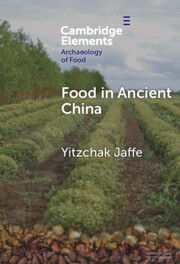Element contents
Food in Ancient China
Published online by Cambridge University Press: 01 December 2023
Summary
Keywords
- Type
- Element
- Information
- Online ISBN: 9781009408370Publisher: Cambridge University PressPrint publication: 21 December 2023
Bibliography
- 1
- Cited by

